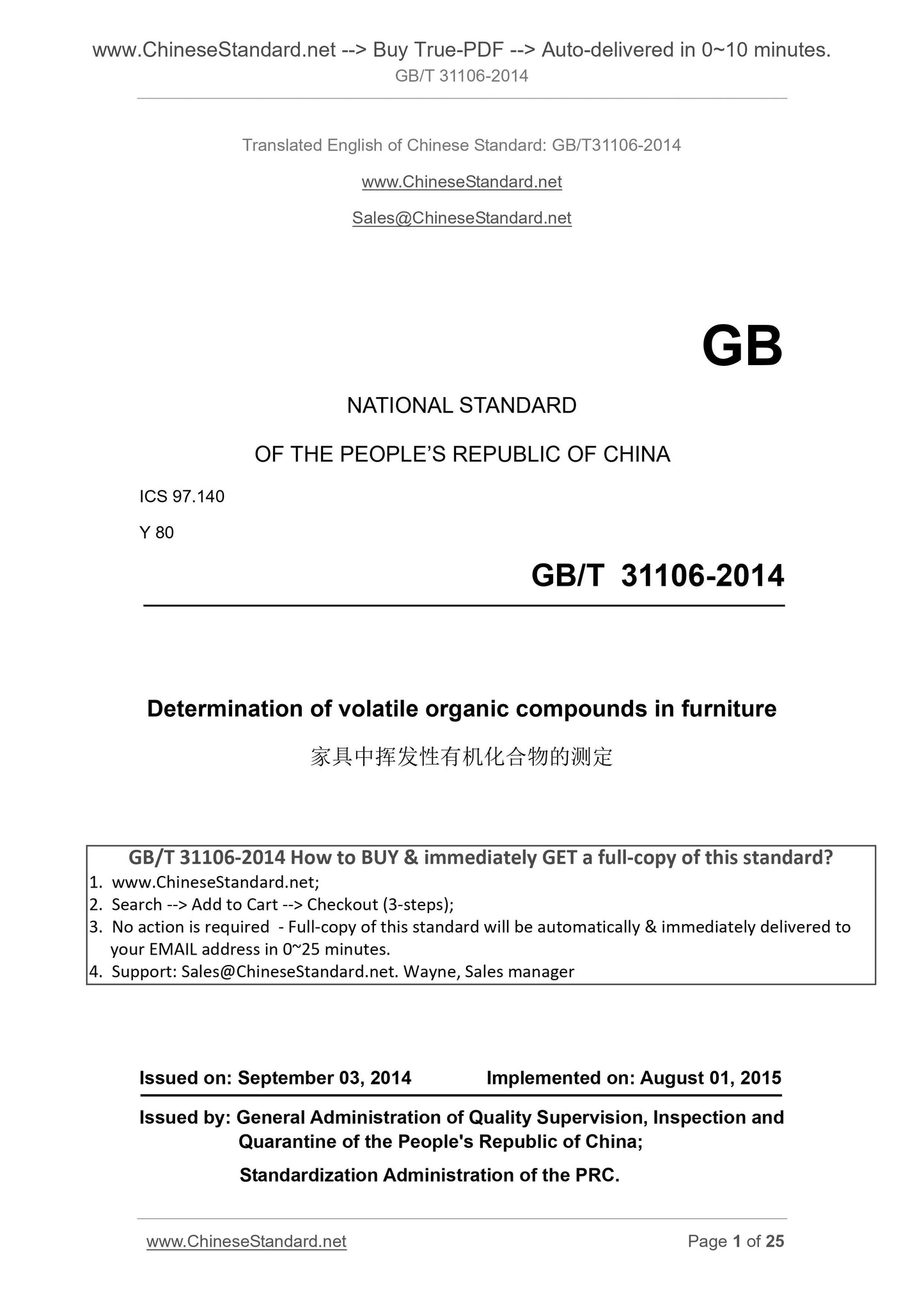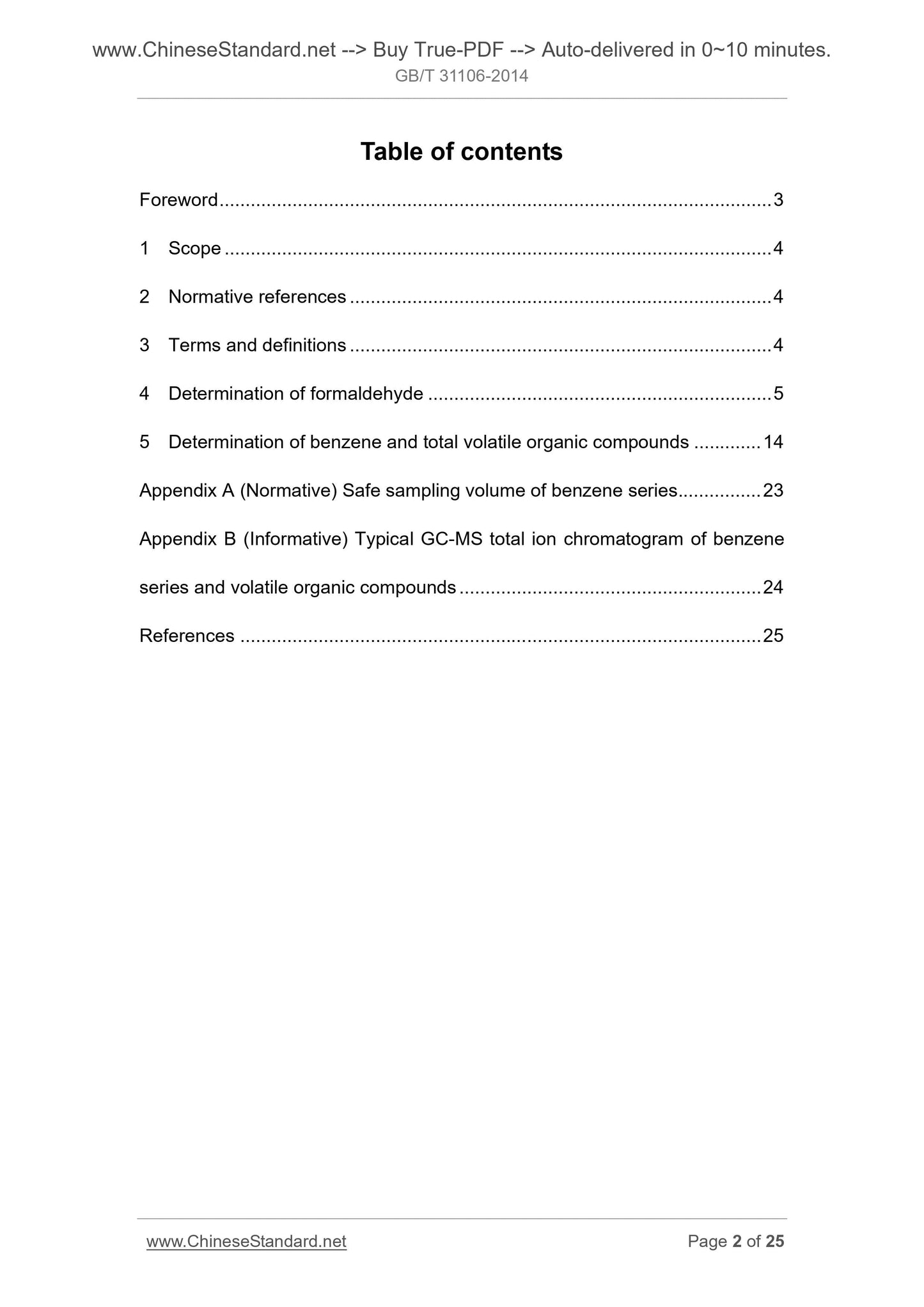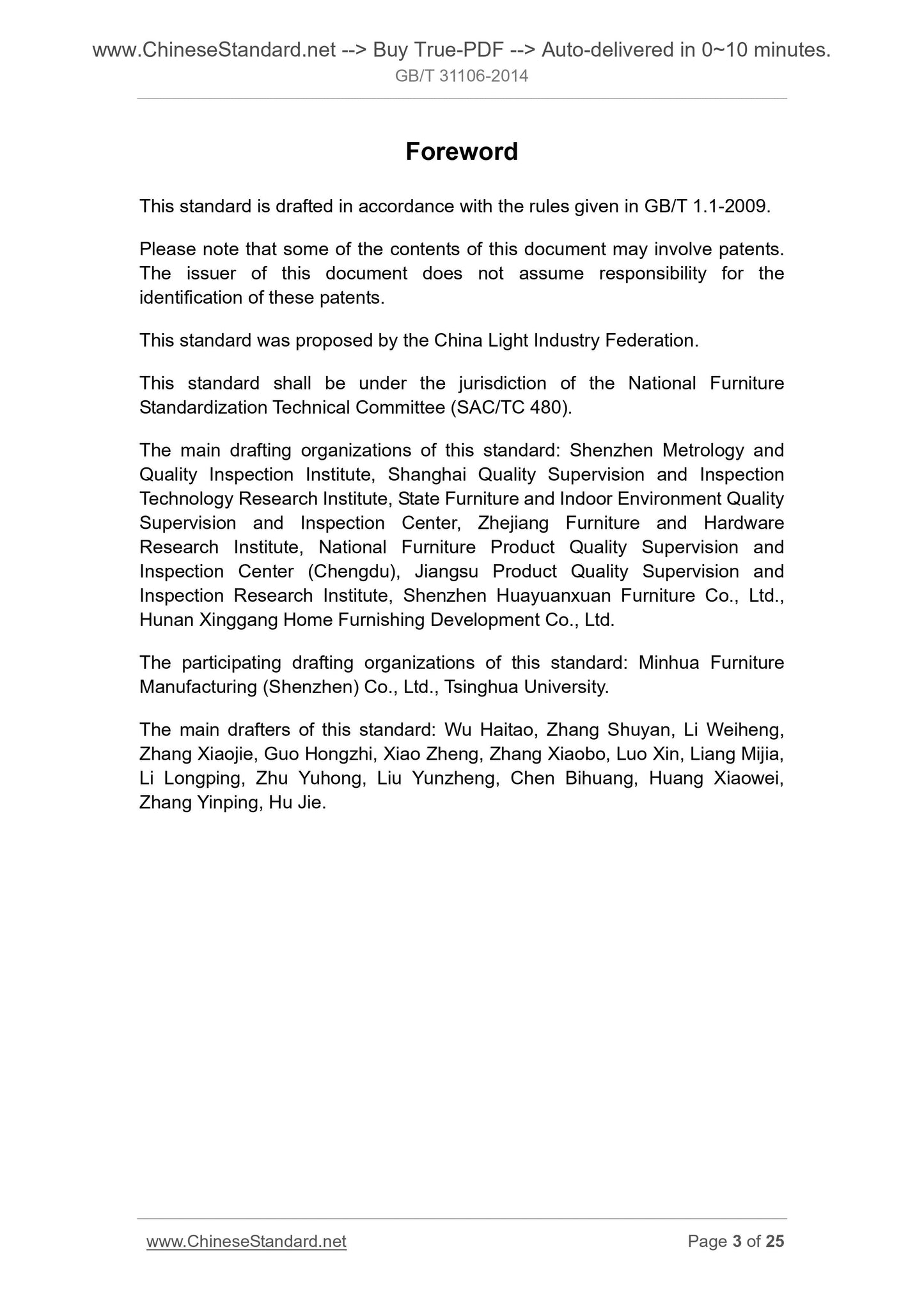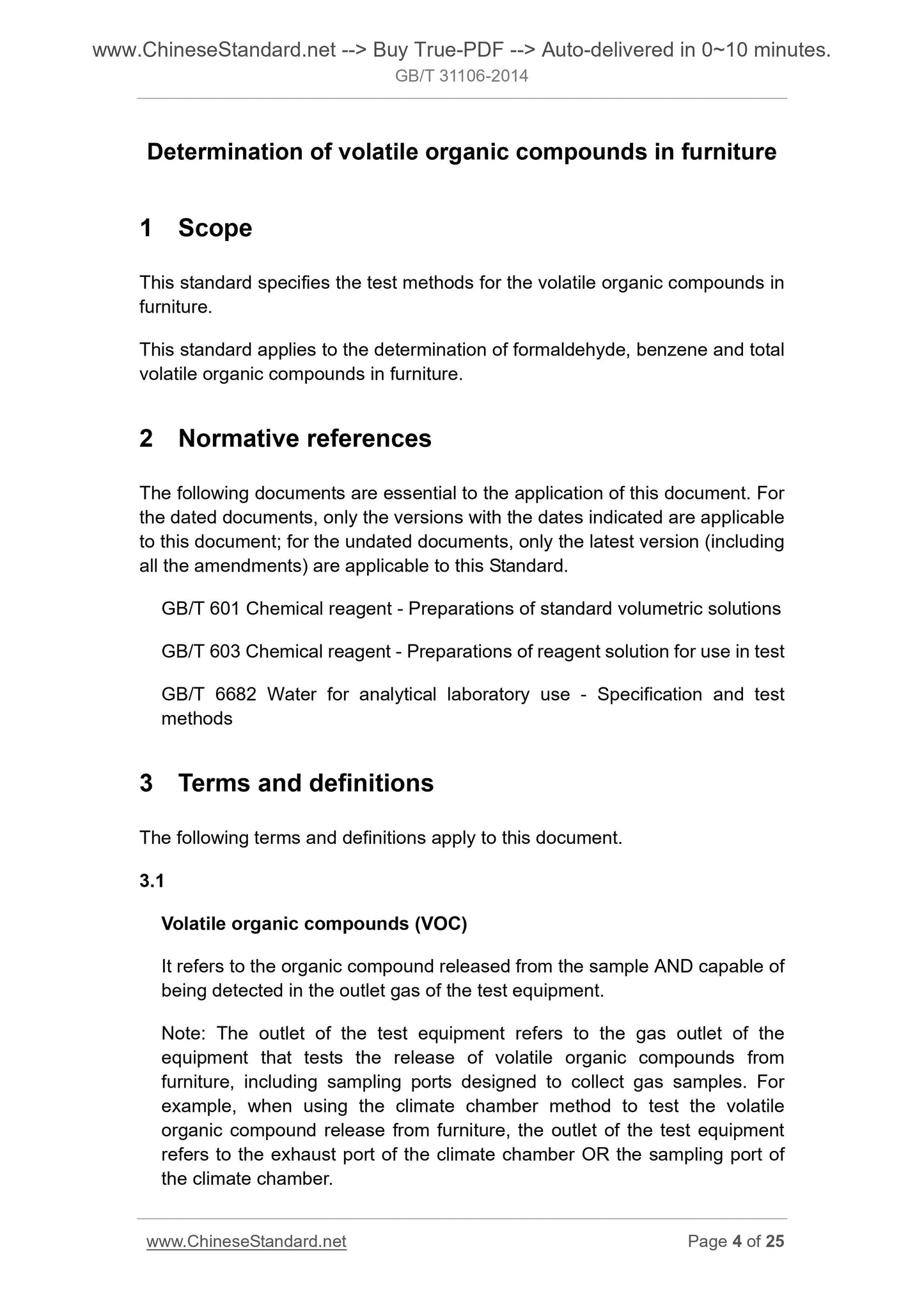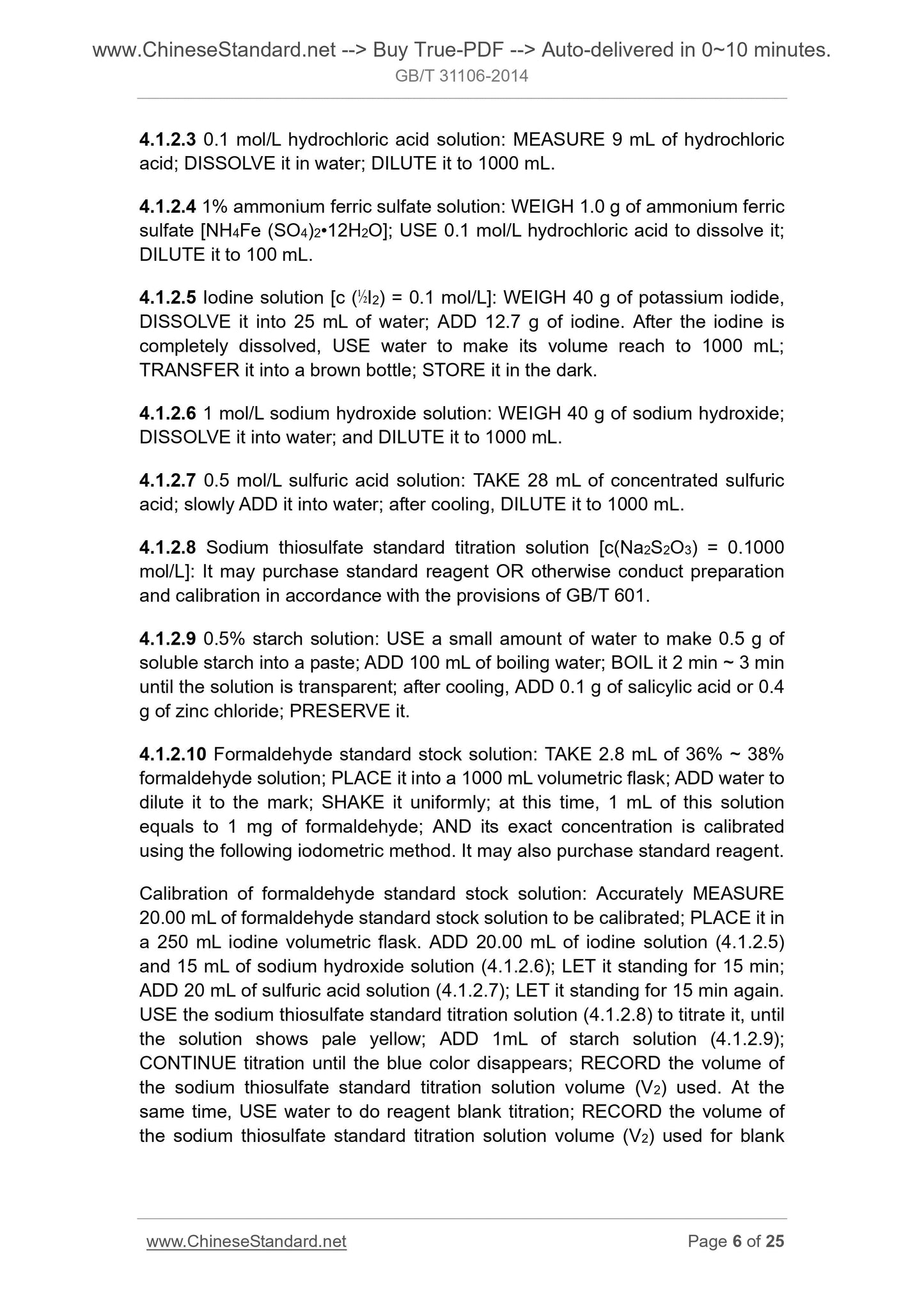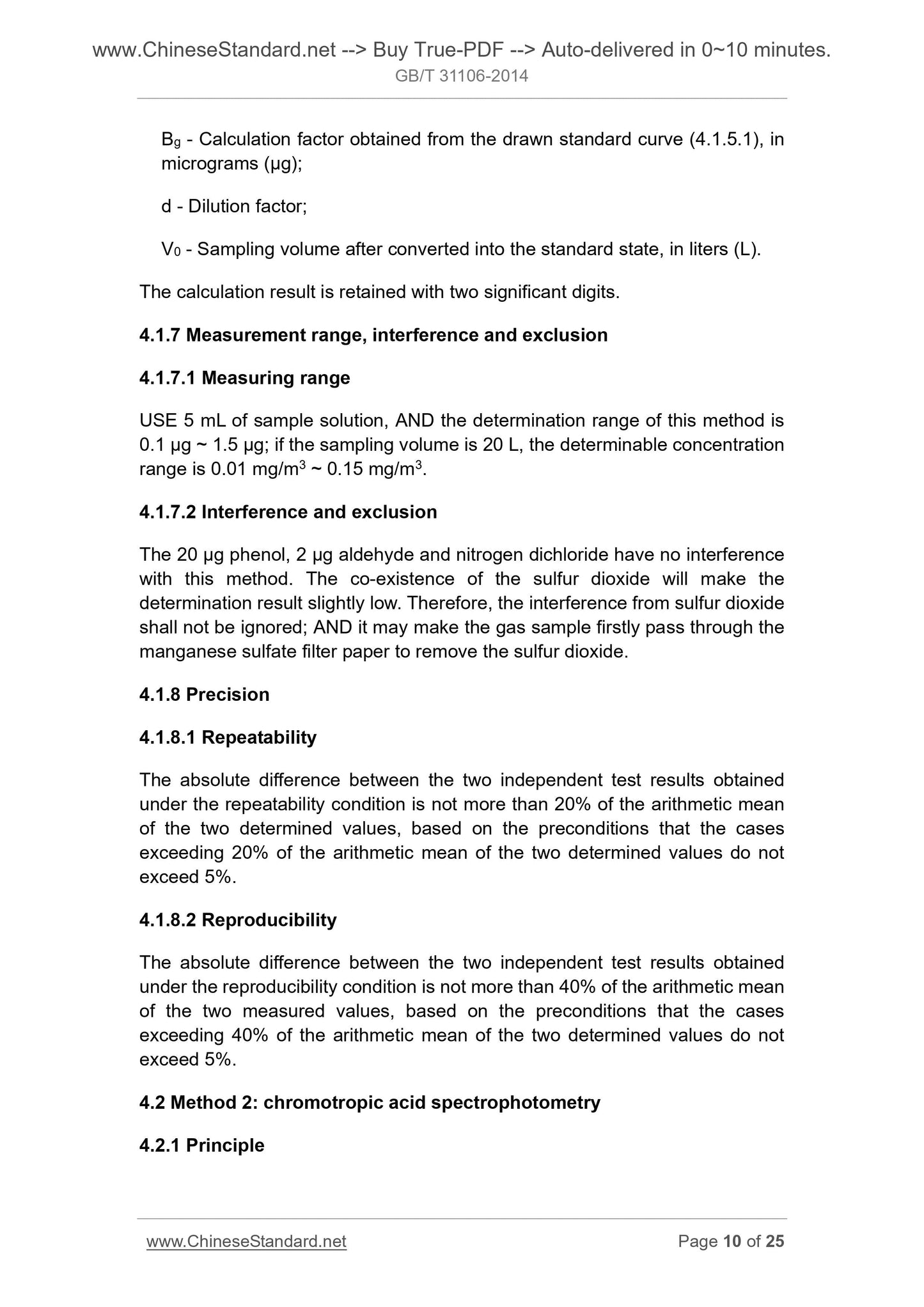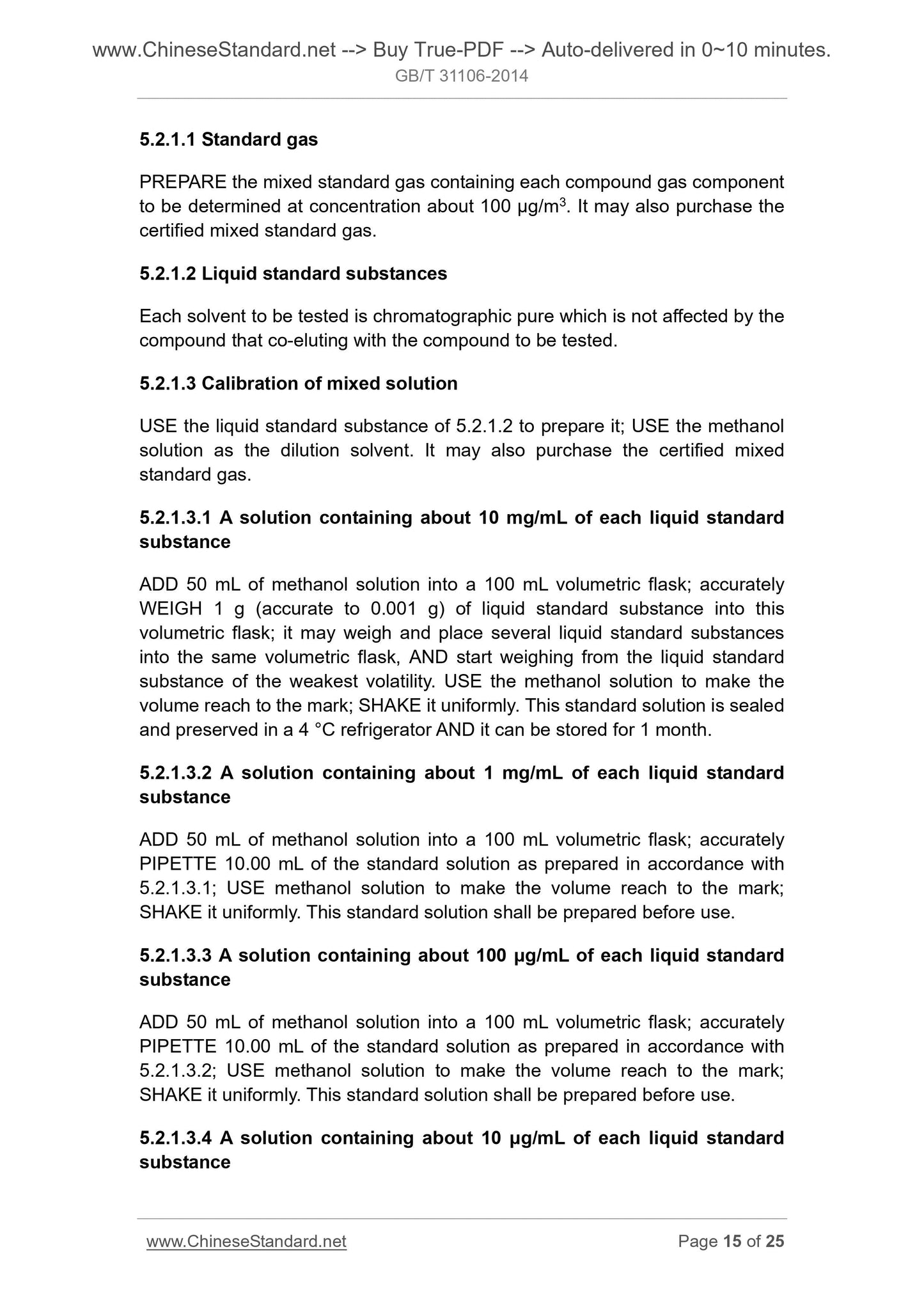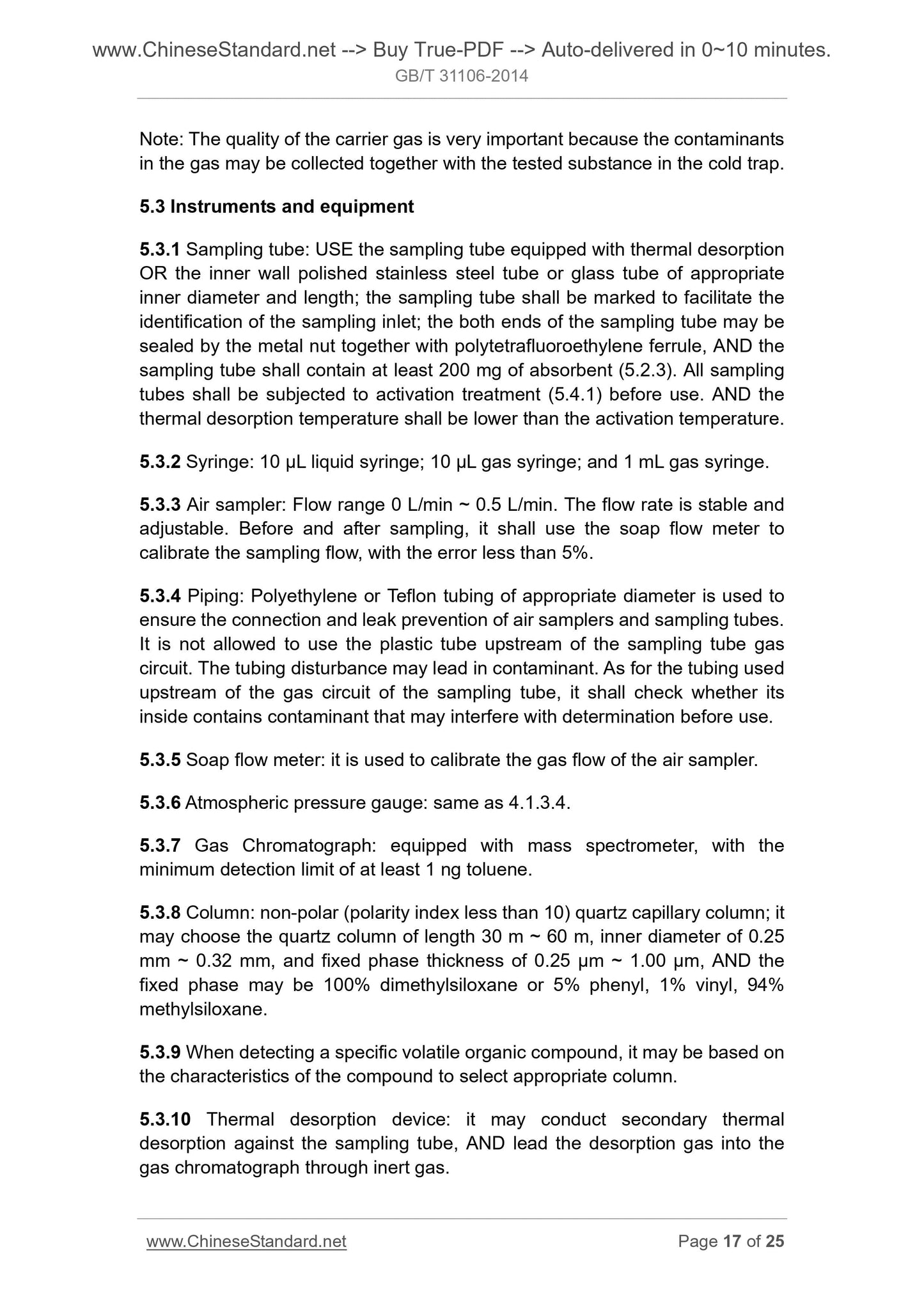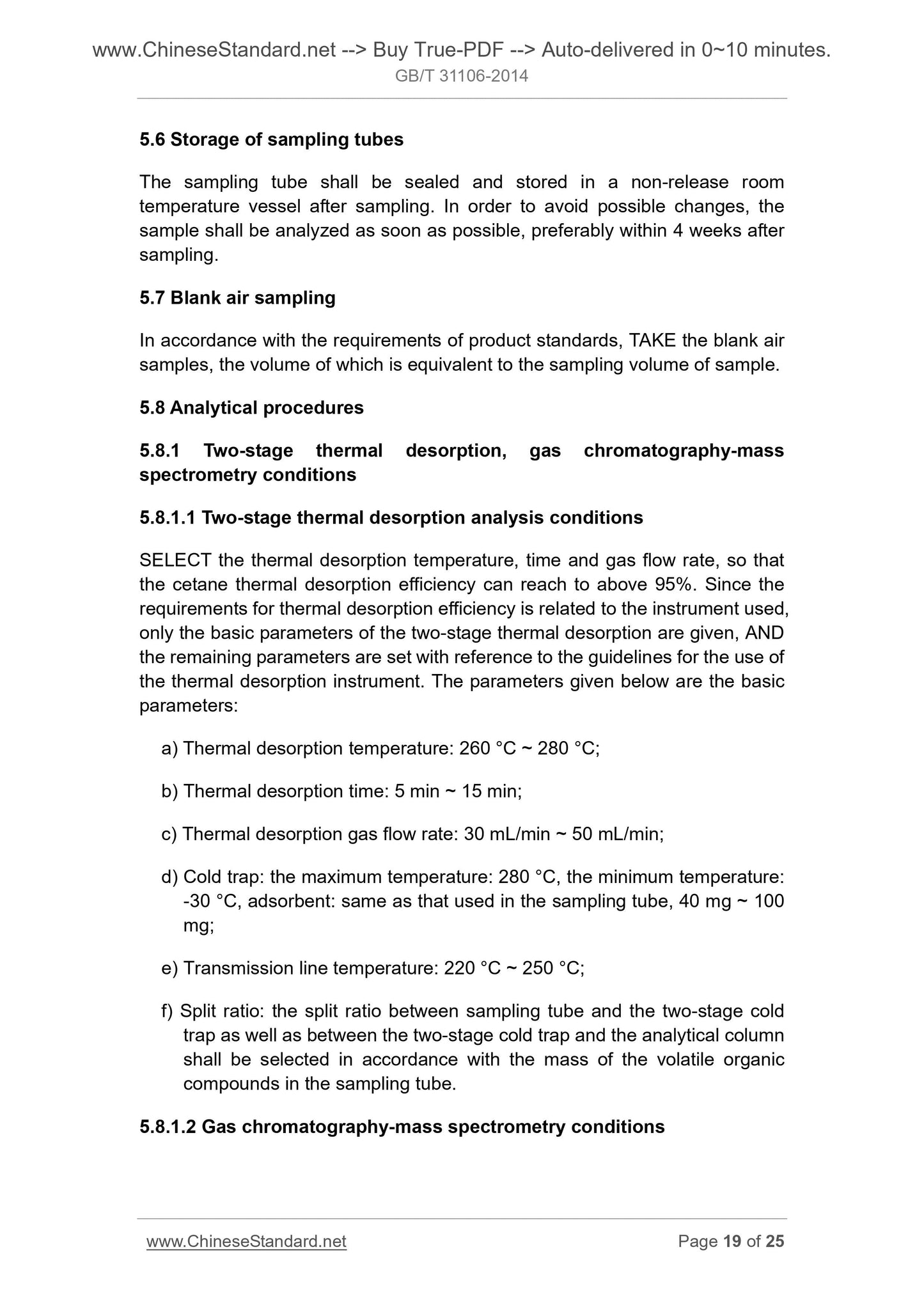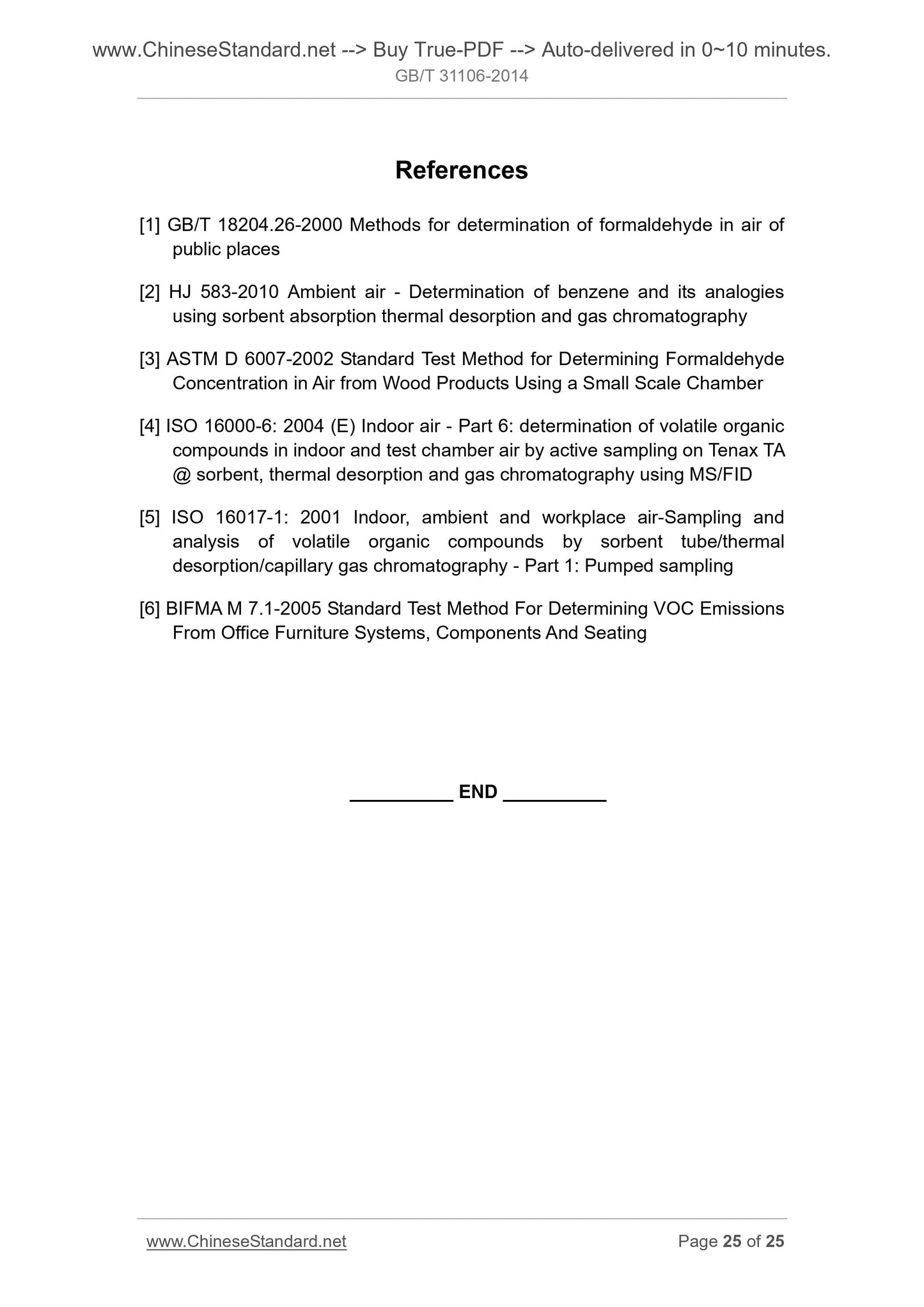1
/
of
11
www.ChineseStandard.us -- Field Test Asia Pte. Ltd.
GB/T 31106-2014 English PDF (GB/T31106-2014)
GB/T 31106-2014 English PDF (GB/T31106-2014)
Regular price
$130.00
Regular price
Sale price
$130.00
Unit price
/
per
Shipping calculated at checkout.
Couldn't load pickup availability
GB/T 31106-2014: Determination of volatile organic compounds in furniture
Delivery: 9 seconds. Download (and Email) true-PDF + Invoice.Get Quotation: Click GB/T 31106-2014 (Self-service in 1-minute)
Newer / historical versions: GB/T 31106-2014
Preview True-PDF
Scope
This standard specifies the test methods for the volatile organic compounds infurniture.
This standard applies to the determination of formaldehyde, benzene and total
volatile organic compounds in furniture.
Basic Data
| Standard ID | GB/T 31106-2014 (GB/T31106-2014) |
| Description (Translated English) | Determination of volatile organic compounds in furniture |
| Sector / Industry | National Standard (Recommended) |
| Classification of Chinese Standard | Y80 |
| Classification of International Standard | 97.140 |
| Word Count Estimation | 18,12 |
| Date of Issue | 9/3/2014 |
| Date of Implementation | 8/1/2015 |
| Quoted Standard | GB/T 601; GB/T 603; GB/T 6682 |
| Regulation (derived from) | People's Republic of China Announcement of Newly Approved National Standards No. 21 of 2014 |
| Issuing agency(ies) | General Administration of Quality Supervision, Inspection and Quarantine of the People's Republic of China, Standardization Administration of the People's Republic of China |
| Summary | This standard specifies the test method for volatile organic compounds released from furniture. This standard applies to formaldehyde, benzene, furniture Determination of total volatile organic compounds emissions. |
Share
